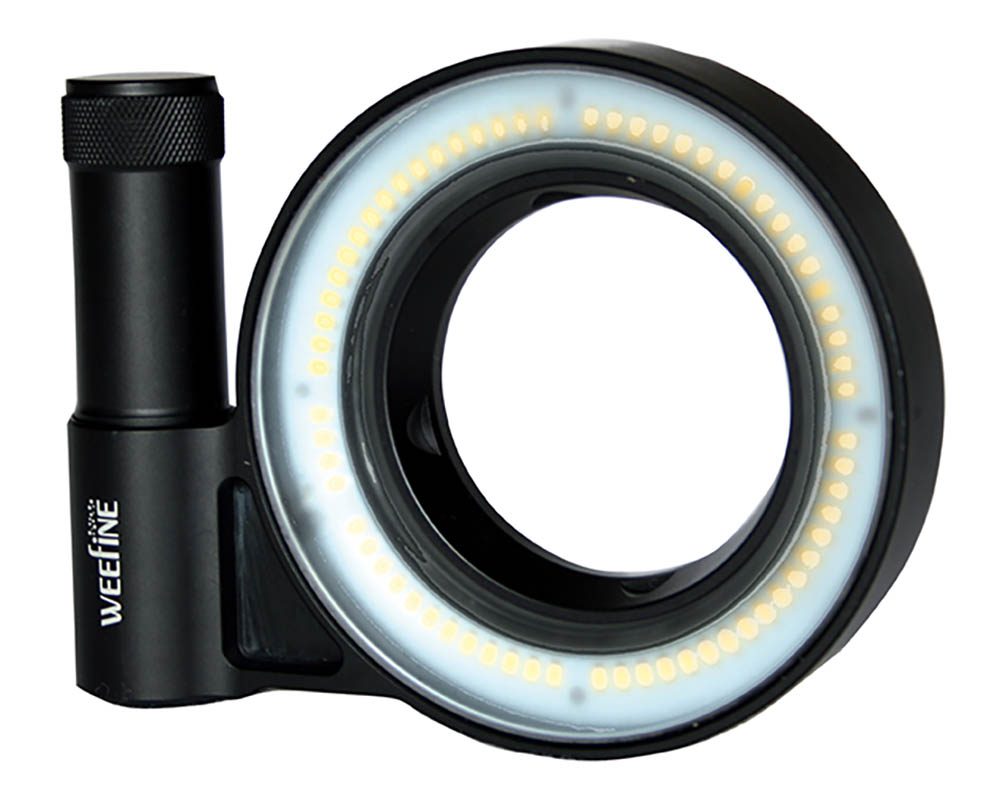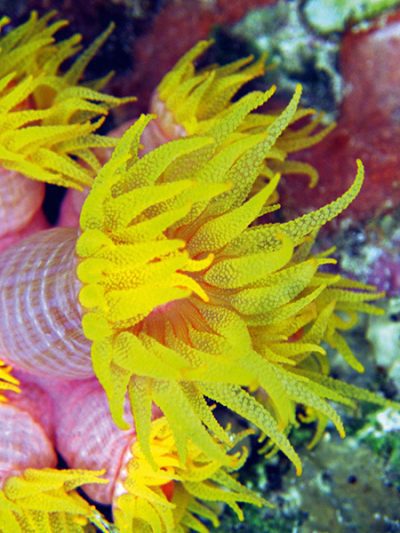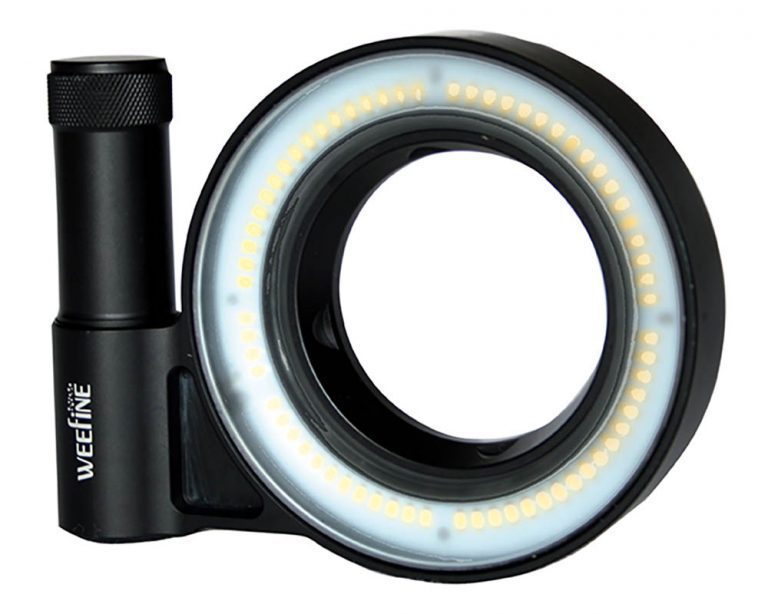CAMERA LIGHT
Weefine Ring-light

BACK IN THE DAY, newbie underwater photographers were often advised to start with close-up work. You could pre-set your camera and flashgun, so all you had to do on the dive was find a subject, frame it with the wire-framer supplied with your close-up lens, and press the button for nicely exposed, sharply focused pictures.
Anything else introduced so many variables that your success rate was inevitably reduced, sometimes to zero, until you’d built up some experience and expertise.
The biggest challenge in this has always been lighting. You generally need the camera so close to the subject that positioning one or two strobes to deliver even illumination is tricky.
On land, the ring-flash, a strobe with a circular flash tube that fits around the lens, has been an accepted solution for years. Now Weefine has a similar product for the underwater photographer, the Weefine Ring Light 1000, a ring-light that produces a continuous beam of light rather than a flash.
The Design
The light comes from a series of LEDs arranged in a circular pattern. An L-shaped sticky-out bit holds the battery, a rechargeable 18650 lithium type. Simply unscrew the battery-housing, the long arm of the L, to access the battery for charging.

Battery and charger are both supplied, and if you’re stuck somewhere without power, an adapter supplied with the light will allow you to use three AAA batteries instead.
On the side of the battery-housing is the on/off switch. Hold this down for a few seconds and the light comes on or goes off, or press and release the switch to alter the light output. You can choose from high, medium and low settings.
The unit is completely self-contained, so once you’ve charged the battery and screwed it to the light, the unit simply screws to the lens-mounting thread on your housing or, as I chose to use it, to the front thread of an add-on macro lens. Thread size is 67mm. There are no other connections to camera.
Appeared in DIVER January 2018
Focussing
Focusing is critical in close-up work, and the focus mechanism of the camera has only a small range in which to work if you use an add-on lens, so I quickly found a simple technique to get good pictures. The camera I used had a lens that could be zoomed from moderate wide-angle to short telephoto, so I first set the zoom to adjust the field of view, wider for bigger subjects, telephoto for smaller ones.
Then I found the subject using the viewing screen, not always an easy job, and moved the camera back and forth until the picture looked sharp. A half-press on the shutter-button fine-tuned focus, and then a final squeeze and the shot was in the bag.
Then, and this is really important, I repeated the process. And again. When you’re shooting really small subjects, the slightest movement of the camera can alter focus and framing, so taking plenty of pictures improves your chances of getting something acceptable. And because this is a continuous light and not a flash, it doesn’t have the blinding brilliance of a strobe, so I didn’t feel uncomfortable taking repetitive exposures.
In Use

The first dive on which I used the Weefine was a Red Sea night-dive, and as soon as I was under water it was obvious that it was bright enough to be my primary dive-light. Bonus. And the battery delivered enough power to keep the light shining brightly for an hour and a half, after which it took around three hours to fully recharge.
Later in the week I used it on a Thistlegorm night-dive with a pair of dive-buddies who commented that the wide beam lit up the wreck very nicely for them, too. During the day it was still more than up to it’s job as a macro-photo light, even in shallow, brightly lit water.
After some trial and error I found that setting the camera to under-expose by two-thirds of a stop and then tweaking the image a bit in Photoshop gave me the best results. I was using a small-sensor compact camera, so depth of field wasn’t much of an issue, and was getting exposures of around 1/80 sec at f5.6 using ISO 200.
If you’re using a larger-sensor camera and need to stop down to get a bit more depth of field, to f8 or f11 say, you’ll need to up the ISO a bit to achieve a decent shutter speed, something that modern digital will cope with extremely well.
Conclusion
The Weefine ring-light is a simple, well-made, easy-to-use bit of kit. If you like macro, it’s more than worth the modest cost.
Specs
TESTER> Mike Ward
PRICES> £200
SIZE> 15 x 12 x 3cm
WEIGHT> 375g
DEPTH RATING> 60m
CONTACT> weefine.com
DIVER GUIDE> 9/10

